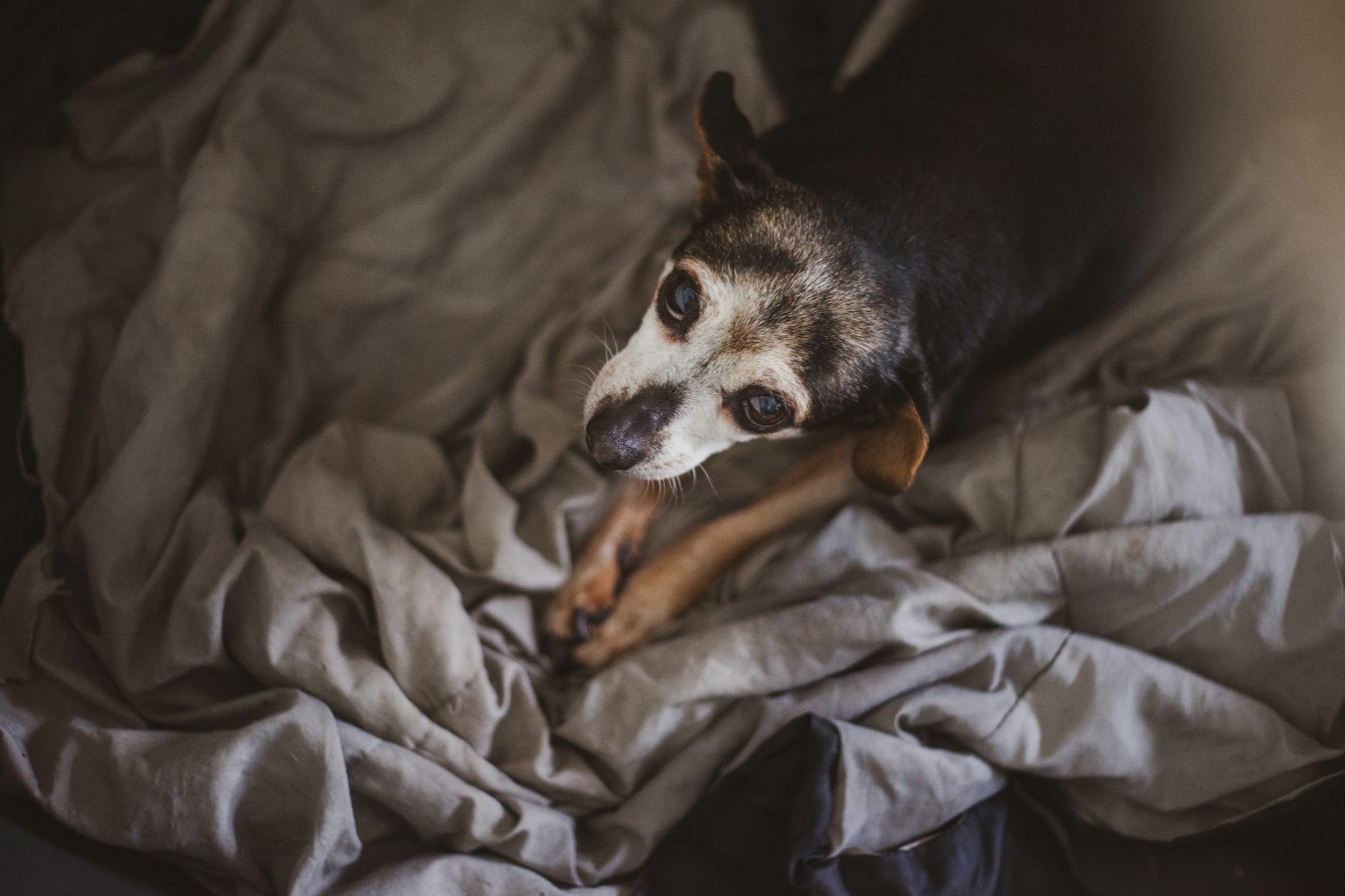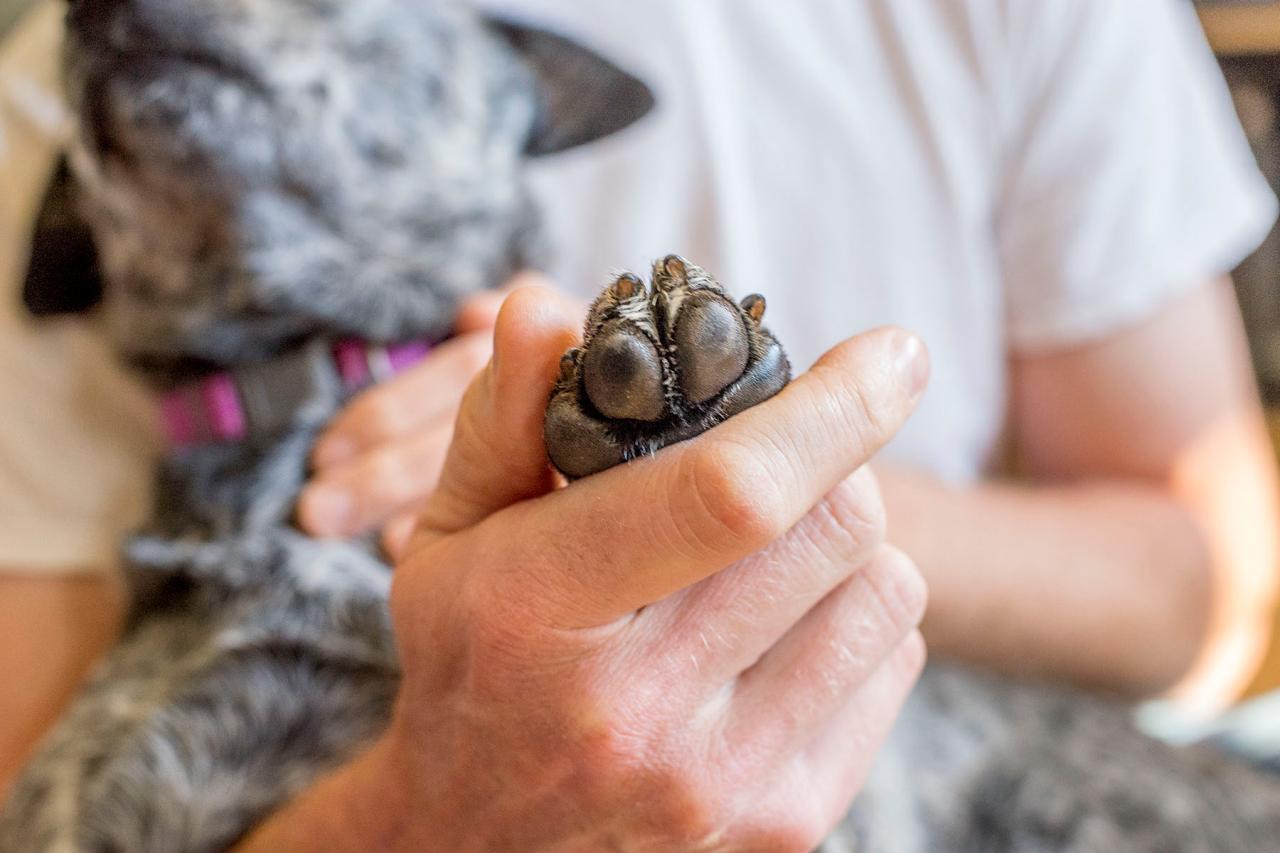Maybe you adopted your dog from a shelter or rescue. He looks like an adult instead of a puppy. But you still wonder how old your pup is. Is there a way to find out at least an estimate?

Unfortunately, that’s about all you can expect. So many factors play a role in how a dog ages that it’s hard to pinpoint how old a pup is. A lot depends on the care he received as a puppy. A healthy diet will provide a solid foundation to ensure that your pet reaches its genetic potential for size.
Your dog’s parents also have a lot to do with your pup’s size and age. Then, there are his past owners if you’ve adopted your pet and how they raised him. However, there are some clues that can get you within the ballpark:
Big or Little Dog
First, you must consider the breed and the size. Generally, small dogs mature quicker than larger ones. A Chihuahua is mature at about nine months. A Newfoundland may not reach adulthood until 16 months or more.
Contrary to popular belief, a dog year doesn’t equal seven for a person. The reason is, as we described above, sexual maturity. A pup that is 1 year old is more like 15 in a human.
The other thing to remember is that smaller breeds often live longer than large ones. The typical lifespan is between 8 and 15 years, with the oldest dog living a whopping 29 years old! The longer the span, the harder it is to pinpoint an age.
Your Pup’s Breed
Then, you should take into account the life expectancy of your dog’s breed. You can get genetic tests that can give you a breakdown of your pup’s lineage. That can help you determine if your pet is young, middle aged, or a senior. Knowing that will give you a framework in which to gauge your dog’s age.
For example, a Great Dane may live 7–10 years old, whereas a Pug may make it to 13–15 years old. While the former will seem old at 5 years, the latter may be just getting started. That means you have to put the age in perspective based on the genetic makeup of your pet.

Teeth Development and Wear
There are two things to consider when looking at your dog’s teeth: the presence of permanent teeth and wear. Puppies will get their adult chompers by six months. They will have well-defined edges in a young dog. Some breeds, such as Pugs, often have a few baby teeth left even after the permanent ones have erupted.
As they age, they’ll start to show signs of wear after all those dog bones, sticks, and games of tug-of-war. Older dogs will also develop tartar, indicating a pet with some age under its belt. Usually, it starts to build up after 4 years old.
Signs of Age
All animals—including humans—show signs of age. We share many of the same ones that you can observe in your dog. After all, we share 84 percent of our DNA with our canine friends. The list of common traits will undoubtedly sound familiar to you.
Activity Level
Perhaps one of the first things you may notice in your dog is a slowing of activity. He may not play fetch for long stretches like he used to do. You may find that he naps more during the day.
Several things are going on that are influencing his energy level. His metabolism is decreasing, meaning he has less spunk for playing games. Also, your dog’s muscles are starting to lose mass, making him weaker and not able to handle those hour-long walks as well.
You may see it in your pet’s desire to play. Instead of jumping at the chance to chase a ball, he may just sit and wag his tail. Some dogs develop arthritis in their later years that can make running painful. You may notice your pup limping or acting stiff. He may have trouble getting up or climbing stairs.
However, arthritis isn’t always a disease that older pets get. Sometimes, injury or genetics can cause it in younger dogs. Unfortunately, there isn’t a cure. Instead, supportive care can make your dog more comfortable.
Going Gray
Many dogs will start to become gray, particularly around the muzzle and eyes. It occurs as early as 4 years old in some breeds, such as Labrador Retrievers. You may also notice that your pup’s coat doesn’t have the luster that it used to have. It may appear dull and feel dry.
You can counter some of these visible signs of age with a conditioning shampoo. It’ll make his coat look shinier and prevent dry skin. Bear in mind that other things can trigger this trait, too, such as stress or a genetic predisposition.

Body Shape
Older pets often develop fatty deposits on their body. It usually goes hand in hand with the decrease in activity levels. Your dog isn’t burning off all those extra calories so that they’re starting to accumulate fat, instead.
Behavior
Sometimes, older dogs develop odd behaviors as they age. They may become more fearful and wary of new experiences, particularly if they weren’t exposed to a variety of things as puppies. Your pup may suddenly be afraid of fireworks or thunderstorms, or he may show signs of separation anxiety.
Final Thoughts
We understand wanting to know exactly how old your dog is. Perhaps the best you can get is a guesstimate of whether he’s a young or older adult. Bear in mind that some dogs, such as Golden Retrievers, often act like puppies their entire lives. Therefore, it’s best to consider a variety of factors when determining the age of your pet.
Our advice is to enjoy the time you have with your pup, no matter how old he is. The important thing is the here and now, with your best friend by your side. Make the most of it and live each day as if you two were going to be together forever.






